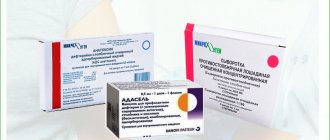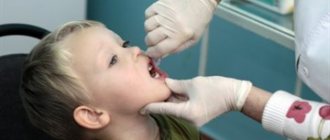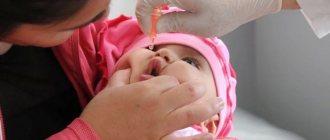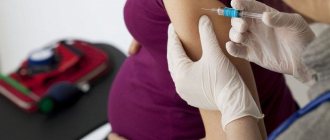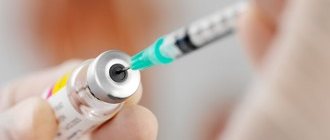BCG is one of the first vaccinations given to a newborn baby. A vaccine is introduced into the child's body to prevent the occurrence of pulmonary tuberculosis and its other clinical forms. Russian children are required to be vaccinated with BCG, since tuberculosis is a common infectious disease, the activity of which is due to the unfavorable epidemiological situation in the country. Parents must understand the importance of preventive procedures. The appearance of the area where the injection solution was injected may cause fear for some time. And, in order not to panic, you should imagine how a wound from BCG heals, what the injection site should normally look like at different stages of healing.
BCG vaccination: how it heals
After the administration of the BCG vaccine, immunity is formed in the child’s body against bacteria that provoke pulmonary and extremely dangerous extrapulmonary tuberculosis. An intradermal injection is made in the shoulder. The development of the reaction to the vaccine is slow.
The healing process includes the formation of an abscess, covering it with a crust, and finally the formation of a scar. All stages take more than one month.
What does the injection site look like immediately after receiving the vaccine?
The medical specialist administering the solution must be attentive and focused: the drug must be squeezed out of the needle not subcutaneously, but into the skin. If he did the job correctly, a small papule appears on the shoulder, in the center of which the puncture point is visible. It is similar to the reaction to the Mantoux test, has a diameter of 5-10 mm, and is noticeably lighter than the surrounding skin.
The papule lasts for 15-20 minutes, the skin around it may turn slightly red. This is fine. The formation of a papule is evidence that the vaccination was done correctly. If blood accumulated at the injection site, the needle was inserted deeply, and the solution ended up in the subcutaneous layer.
How does healing proceed during the first days after vaccination?
In the first 2-3 days after the procedure, the skin around the injection point swells and turns red. This skin reaction lasts 3-4 days, then disappears on its own. Parents should take into account that normally the reaction should only involve the area of the injection papule.
The healing process is normal: in the first weeks and thereafter
If the BCG injection is done correctly, contraindications are taken into account, wound healing should proceed without complications. This process is lengthy and includes the following stages.
- Papule formation. It is usually white, but can be red or even burgundy if the subcutaneous layer is affected. At the stage of the presence of a nodular formation, an increase in body temperature is possible; this is not evidence of pathology.
- A month or a month and a half after the injection, the area where the drug was administered turns red.
- A bubble is formed filled with liquid purulent contents.
- The purulent mass breaks out of the bladder, but new pus forms in the wound. A purulent ulcer is a normal stage of healing; it is strictly forbidden to scratch it, press it, or lubricate it with antiseptic medications.
- The purulent process ends with the formation of a crust on the surface of the wound. It cannot be torn off or treated with anything.
- The ripened crust falls off on its own.
What the BCG vaccination should look like in the end
In place of the fallen off crust, a scar remains, indicating a successful procedure. The diameter of the scar area ranges from 2 to 10 mm. The duration of the BCG healing stages and the size of the scar determine the level of acquired immunity. The longer the skin tissue took to heal, the larger the scar area, the stronger the resulting immunity against tuberculosis.
In the absence of a scar, we can confidently say that immunity to tuberculosis has not appeared. That is, the administration of the vaccine turned out to be ineffective. But parents should not panic in this situation. If the Mantoux test shows a negative result, repeated BCG vaccination is necessary. If the result is positive, the child undergoes the next procedure at 7 years of age.
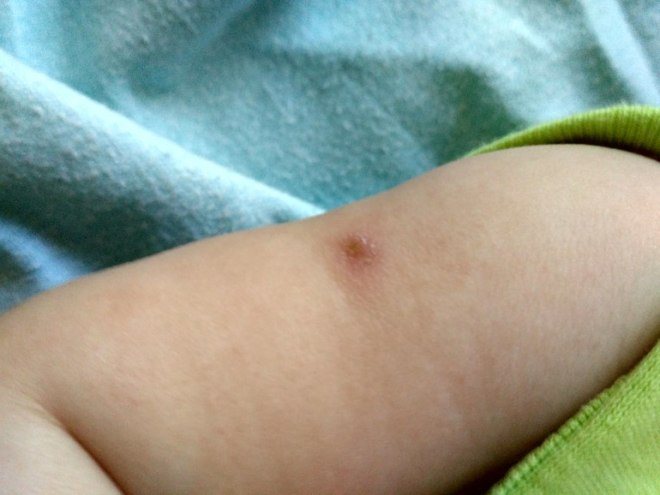
There is no reaction to the first vaccination in 5% of infants. Moreover, approximately 2% of the world's inhabitants have a genetically formed immunity to the infection that causes tuberculosis. These people are not at risk of catching an infectious disease, and they have no trace after the BCG vaccination.
BCG. BCG-M
BCG is a vaccine for the prevention of tuberculosis. Tuberculosis is usually contracted from people. If you live in a country where tuberculosis is a rare disease, if your child will not have contact with other people during the rest of his life, you can, of course, refuse this vaccination!
A fundamental feature of tuberculosis infection is that the antibodies that form after vaccination are unable to prevent the development of the disease. Nevertheless, the presence of antibodies performs an extremely important function - it prevents the occurrence of the most severe forms of the disease: disseminated tuberculosis, miliary tuberculosis, tuberculous meningitis.
BCG vaccination is actually not the prevention of tuberculosis in general, but the prevention of its most severe, deadly, practically untreatable forms.
The drug itself - dry tuberculosis vaccine for intradermal administration - contains live tuberculosis mycobacteria of the BCG vaccine strain and, as a rule, is produced in ampoules containing 10 or 20 doses.
Primary vaccination is carried out for healthy children 3-7 days after birth. The drug is administered exclusively intradermally at the border of the upper and middle third of the outer surface of the left shoulder (dose 0.05 mg, which is 0.1 ml).
Revaccination tactics are regulated by the appropriate vaccination calendar, but in any case there are two points that determine the indications for revaccination. Firstly, using the Mantoux test, the state of anti-tuberculosis immunity is taken into account (for details, see 4.5.1.1) and, secondly, the level of tuberculosis incidence in the territory where the vaccinated person lives is taken into account.
In addition to the standard BCG vaccine, a weakened version of it is produced - the BCG-M vaccine. This vaccine contains exactly the same mycobacteria as the regular one, but their number is reduced by 2 times. In many countries, they do not see any point in releasing “attenuated drugs” - they simply recommend using half the standard dose in certain situations.
The BCG-M vaccine is used to vaccinate premature newborns with low body weight, to vaccinate children who were not vaccinated in the maternity hospital for medical reasons, and sometimes - in areas where the epidemiological situation is free from tuberculosis - to vaccinate all newborns.
Some countries believe that all newborns should be vaccinated at half the standard doses given to older children. These recommendations are based on the fact that dose reduction significantly reduces the likelihood of complications.
Note!
local reaction develops at the injection site . In most cases, it (the reaction) begins after 4-6 weeks: redness appears, then thickening, a little later a bubble with cloudy contents forms, and even later a crust. All these transformations continue for 2-6 months, and as a result, a small scar remains - a scar up to 10 mm long.
The injection site of the vaccine at any stage of the reaction (redness, thickening, blister, crust) does not require any treatment with disinfectants, any bandages, compresses, squeezing, etc. You cannot remove the crust or rub the injection site during hygiene procedures.
BCG
published 02/07/2019 10:56 updated 18/05/2020 - Wiki of Dr. Komarovsky
BCG: how long does it take to heal?
The main symptoms are noted a month or a month and a half after the procedure. How long it takes for BCG to heal in infants cannot be said with certainty: the duration of the reaction depends on the characteristics of the body and many other factors. In most cases, the formation of an abscess lasts almost two months, and the formation of a crust and scar takes about a month. How BCG heals at 7 years old also depends on the immune system. Normally, the Mantoux test should look like an injection point.
During the period of formation of immunity to tuberculosis, the following processes occur in the child’s body, which are not pathological:
- redness of the skin at the injection point;
- a small abscess at the stage of scarring of skin tissue;
- purulent accumulations in the wound, not accompanied by tissue swelling and severe redness;
- itching, signaling that the vaccine is working and the skin is healing;
- swelling of the skin, confirming the presence of an immune response to the administered drug;
- a slight increase in temperature, lasting no more than 3 days, provoked by the appearance of antibodies to the vaccine in the blood.
If the temperature after the injection lasts more than 3 days, the child should be urgently taken to the pediatrician.
To whom do they do it?
According to the immunization algorithm, in most cases, all Russian children are vaccinated with BCG at the age of 7, in the first grade of primary school. This is provided for in the national vaccination calendar against dangerous diseases.
Repeated introduction of a weakened strain of tuberculosis makes it possible to activate the immunity that was formed at the age of one, when the child was vaccinated for the first time.
The injection is given to all children unless there are contraindications for health reasons or a special written refusal from parents or guardians.
Often, educational institutions enter into an agreement with a medical institution, and revaccination is carried out immediately for the entire group of first-graders. Therefore, sometimes the BCG vaccination is given at 6 years of age, but at this age there is no big difference, the main thing is not to delay the deadline and administer the vaccine on time.
Possible deviations and complications in healing
Complications after administration of the BCG vaccine are rare. Typically, patients with innate weak immunity experience negative consequences. In children with immunodeficiency, in 90% of cases local negative reactions are observed: inflammation of the lymph nodes, severe growth of a purulent focus. But in general, side effects occur in only one vaccinated child out of 1000.
A side effect may be osteomyelitis - purulent necrosis of bone tissue. But such a serious complication is a consequence of the poor quality of the injection solution. According to medical statistics, in almost all cases of complications the medical specialist is to blame for either giving the injection incorrectly or using a low-quality drug.
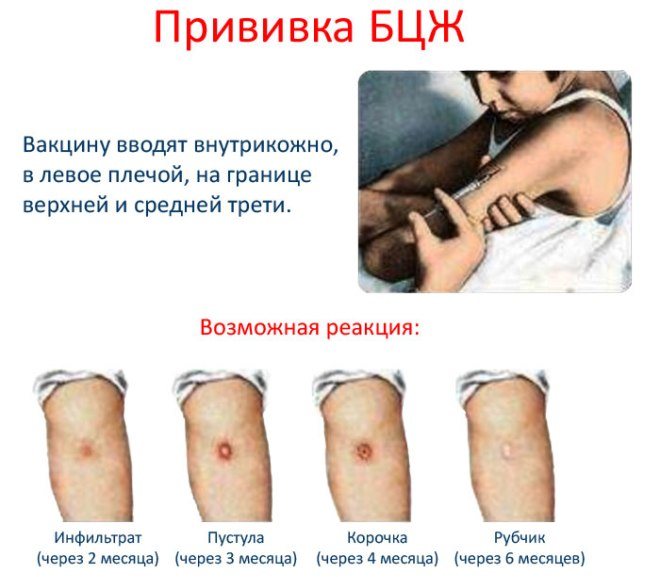
The most common complications include:
- cold abscess - a limited accumulation of pus, resulting from the subcutaneous insertion of a needle, developing a month after the procedure, requiring surgical intervention;
- extensive ulcerative formation exceeding 1 cm in diameter, which occurs when the child’s body is sensitive to the vaccine, is treated with topical medications;
- inflammation of the lymph nodes, which develops when introduced bacteria penetrate through the blood into the lymph nodes (if the node reaches more than 1 cm, it is removed surgically);
- keloid - a reddened and swollen scar resulting from a skin reaction to the vaccine;
- a generalized infectious lesion of the body that develops in the presence of disturbances in the functioning of the immune system;
- Osteitis is a bone tuberculosis that appears about a year after the procedure due to immune disorders.
What to do if BCG does not heal
Wound healing takes a long time. Each organism gives its own immune response: weak or pronounced. Therefore, parents do not need to run to the doctor in panic every time their child comes out of a wound or has a fever.
For some children, the process lasts up to a year. But, if after a year the wound has not healed, it is necessary to show the baby to the pediatrician. You should urgently consult a specialist if, six months after the injection, the damaged skin area does not scar, but remains inflamed, with a large abscess ripening in it.
Some children can scratch the wound and tear off the scab. And then the healing process begins again. To prevent this from happening, it is recommended to tie a sterile bandage around the shoulder in the area of the wound.
Modern parents often refuse to vaccinate their baby. But it should be understood that failure to prevent tuberculosis is a risk to children’s health. It’s better for a child to suffer an unpleasant injection once than to have to spend a long time being treated for a serious infectious disease.


